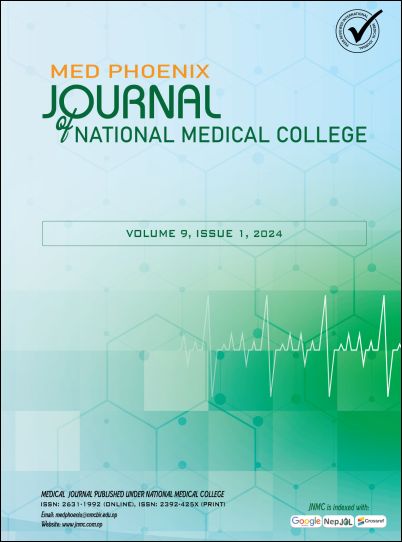False Low Beta-hCG in a Complete Hydatidiform Molar Pregnancy: A Case of Hook Effect
DOI:
https://doi.org/10.3126/medphoenix.v9i1.67256Keywords:
β-hCG, False Low hCG, Hook Effect, Molar PregnancyAbstract
Introduction: Hydatidiform molar pregnancy presents as a proliferative disorder of trophoblastic cells. Complete hydatidiform molar pregnancy presents typically with abnormally high levels of beta human chorionic gonadotropin (β-hCG). The high level of β-hCG is taken as a marker in its diagnosis and follows up. However, many a times very high levels of β-hCG may be associated with falsely low or negative β-hCG levels because of “Hook effect”. The hook effect occurs with extremely high levels of β-hCG, saturating detection antibodies, leading to falsely low laboratory results. If unrecognized, this can lead to misdiagnosis and a delayed therapy or mismanagement of care that may have a negative treatment outcome. Here, we report a case of Hook effect presented to Emergency Department of a tertiary care center, National Medical College Teaching Hospital, Birgunj, Nepal.
Downloads
Downloads
Published
How to Cite
Issue
Section
License
Copyright (c) 2024 Med Phoenix

This work is licensed under a Creative Commons Attribution-NonCommercial 4.0 International License.
Copyright on any research article is transferred in full to MED PHOENIX upon publication. The copyright transfer includes the right to reproduce and distribute the article in any form of reproduction (printing, electronic media or any other form).
© MEDPHOENIX
![]()
Articles in the MED PHOENIX are Open Access articles published under the Creative Commons CC BY License (https://creativecommons.org/licenses/by/4.0/). This license permits use, distribution and reproduction in any medium, provided the original work is properly cited.




